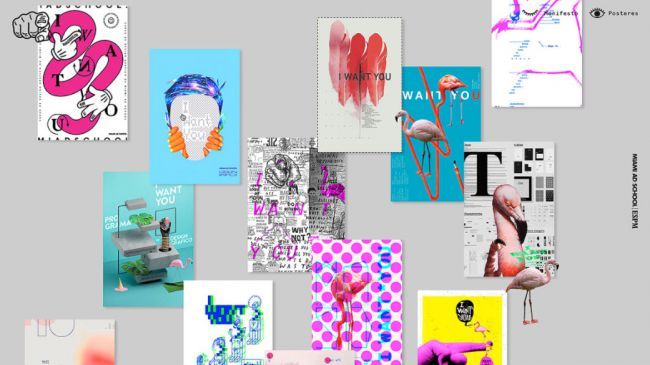Here’s how to create a unique design portfolio to win you that dream job.
Whether physical or online, your design portfolio is like your calling card. It will often be the basis on which a company picks you over other candidates, and there’s nothing more vital to your career than presenting your best creative work in an attractive, professional, and accessible portfolio.
We’ve had a chat with leading designers, illustrators, and creative practitioners, and have put together a selection of great professional tips for dusting off a tired design portfolio and making it the very best it can be, to hook that dream design job.
Portfolios can be tailored to the job you are applying for. Yes this does mean that you should create multiple design portfolios tailored to different jobs or different types of companies.
-
Your Breadth of Work
Ever wonder how many creative works should a design portfolio include? By industry standard, you should aim to fill at least 20 pages of a physical folio, and at least 30 examples for an online space.
The organization should be able to see a healthy breadth of work together with a range of applications, so even if you select several examples from a single project you should make sure that you treat each image individually.
-
Show Your Appropriate Examples
Include creative work examples that aim for a full-time position and are appropriate to the role. A creative director position, for instance, won’t showcase much art work – if any at all – so work that demonstrates your artistic ability isn’t relevant.
-
Provide a Brief with Your Work
As an aspiring designer, you won’t just be employed for your style but also for the clarity with which you execute your project. If you include examples of your artwork without providing information on what it is you wanted your work to achieve, it’s impossible to judge.
Make sure you include a paragraph about how and why the work was created. Cleary state what the brief asked for in each design portfolio example you include, then demonstrate how you successfully communicated the message of the brief.

-
Include Your Non-client Work
Your design portfolio doesn’t need to be limited to only including the work you have done for clients. Creative projects you have done for yourself are certainly acceptable in full-time applications and recommended for freelance work – especially for illustrators.
-
Update Your Portfolio Regularly
Try not to bulk out your design portfolio with old or irrelevant examples of your work by replacing them with current and relevant work. Your design portfolios will need constant attention – you never know when you might be called on to present your work to your dream company.
-
Include Your Case Studies
Your design portfolio is more than just a collection of your art and design work. Showing your recommendations and real-life case studies go a long way in showing how professionally capable you are as well. Approach a previous client or employer for a recommendation and write up a short case study to accompany a project.
-
Step Back for a Look
Take a step back and try to look at your design portfolio through the perspective of your client or audience. Experienced employers, project managers and agents know are able to match up your resume to your design portfolio and find out your character strengths and weaknesses.
Think critically about what you want your design portfolio to say about you, and make that the forefront of your portfolio.
-
Demonstrate Your All-round Experience
Identify your capabilities. Are you only capable of good illustration or editorial layout? Probably not: you’re also a solid communicator who understands budgets and deadlines, and how organizations work. These are all considered professional skills.
Make sure your design portfolio clearly showcases that you possess these skills, even if you just simply list them in your accompanying notes.
-
Plan How You Will Sell Yourself
Think about what other creative talents you might have as well. For instance, such as photography or coding. They’re all added strings to your creative talents.
-
Catalogue Your Design Portfolio
What do you do when you find a particularly interesting creative design work? You bookmark it as you may want to use for inspiration in your next project.
Those viewing your design portfolio would want to do the same, so make it easy for them by including page numbers and clear project titles for each portfolio example. It is a step that would be much appreciated.
